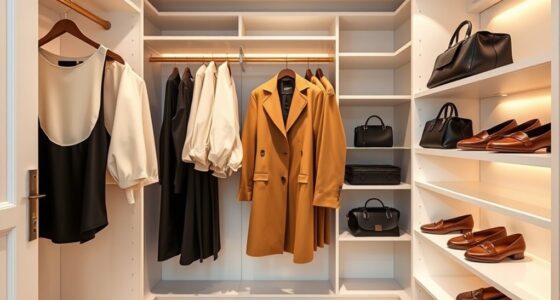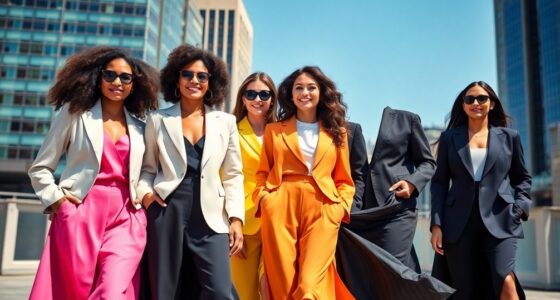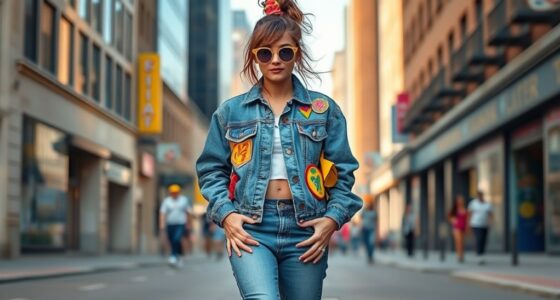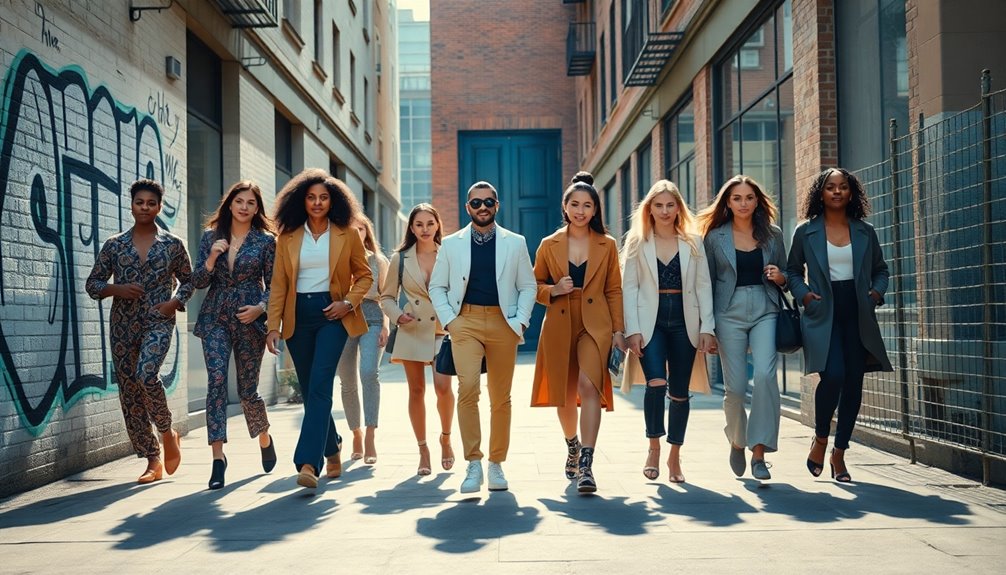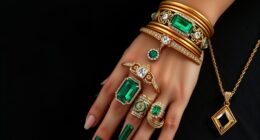The CFDA, founded in 1962, is a powerhouse that shapes America's fashion scene. It brings together over 450 influential designers, promoting creativity and innovation while championing diversity and sustainability. You'll find initiatives like the CFDA/Vogue Fashion Fund, which supports emerging talent with mentorship and funding. The organization actively works toward inclusivity, amplifying underrepresented voices and fostering collaboration. Their annual Fashion Awards recognize standout contributions, further enriching the American fashion landscape. By embracing diverse styles and backgrounds, the CFDA guarantees a vibrant community that continues to thrive. If you stick around, you'll discover more about its impactful journey and ongoing initiatives.
Key Takeaways
- The CFDA, founded in 1962 by Eleanor Lambert, aims to elevate American fashion and support creative excellence.
- Membership includes over 450 diverse designers, selected through a rigorous election process to ensure innovation and talent.
- Key initiatives like the CFDA/Vogue Fashion Fund provide crucial financial support and mentorship for emerging designers.
- The organization actively promotes diversity, equity, and sustainability, enhancing inclusivity within the fashion industry.
- CFDA's annual Fashion Awards celebrate exceptional contributions, fostering a vibrant community and inspiring future creativity in American fashion.
History and Founding of CFDA
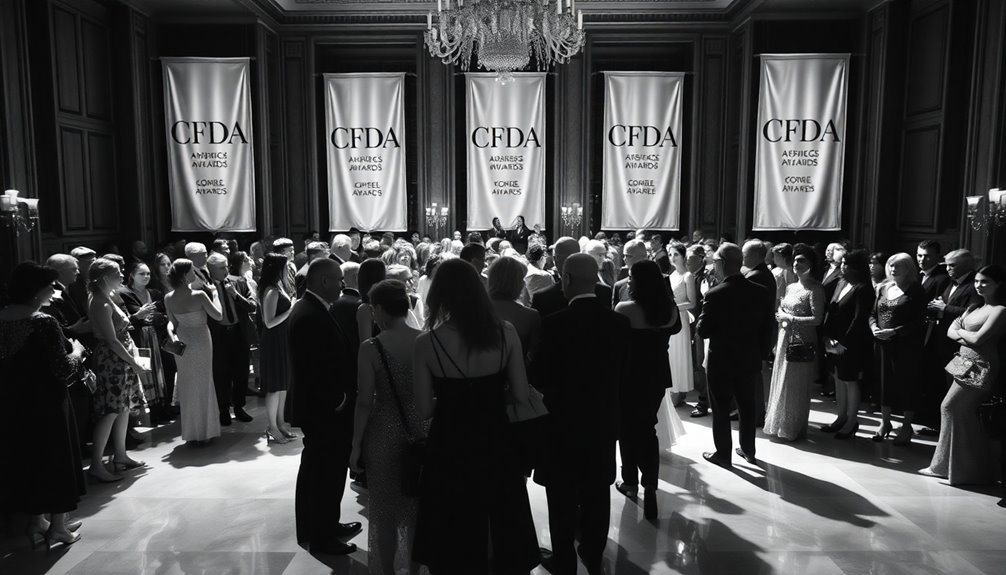
Founded in 1962 by Eleanor Lambert, the Council of Fashion Designers of America (CFDA) emerged to elevate American fashion to a recognized art form.
Initially, a group of 50 influential designers, including legends like Bill Blass and Norman Norell, laid the groundwork for what would become a pivotal organization in the industry.
The CFDA's mission centers on enhancing the global impact of American fashion while supporting creative excellence.
By promoting diversity, equity, and sustainability, the CFDA aims to nurture the industry's evolution.
As you explore its history, you'll see how the CFDA has consistently championed American designers, helping to shape the fashion landscape and solidify the country's cultural identity in this vibrant art form.
Membership and Selection Process

With over 450 leading designers as members, the CFDA boasts an exclusive and prestigious membership that reflects the diversity and innovation within American fashion.
You'll find that joining the CFDA isn't an open invitation; it requires either election by current members or a special invitation. This selective process guarantees that only the most talented and impactful designers are part of this influential community.
As a member, you'll represent various styles and backgrounds, enriching the CFDA's collective voice. The organization's structure encourages collaboration among designers, fostering creativity and innovation.
Key Programs and Initiatives
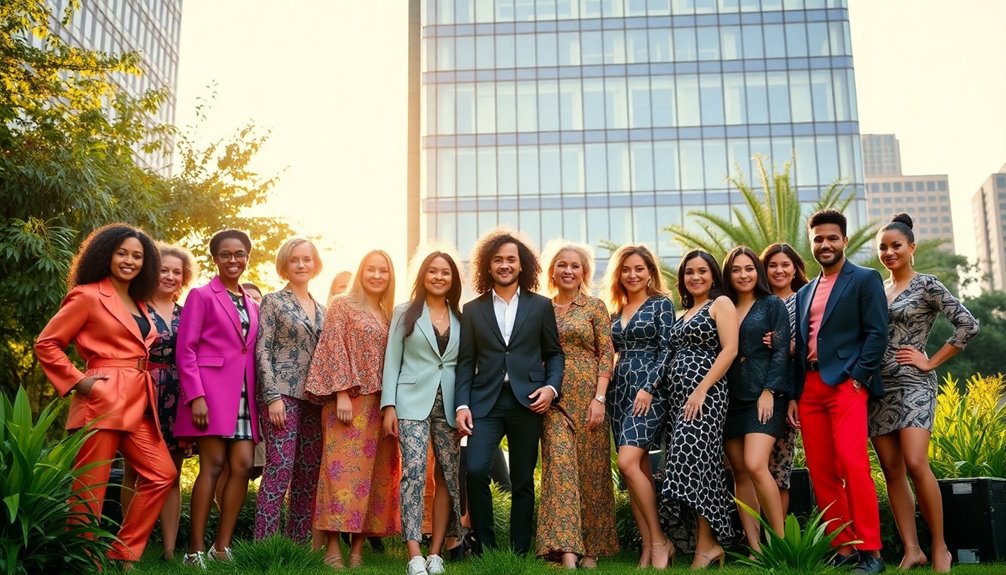
As you explore the CFDA's impact on American fashion, you'll discover its key programs and initiatives designed to nurture talent and promote innovation.
The CFDA/Vogue Fashion Fund stands out as a flagship program, offering emerging designers financial support and mentorship to help them thrive.
You'll also find scholarships aimed at fostering the next generation of fashion creators, ensuring education and opportunity are accessible.
Additionally, the CFDA promotes responsible practices and innovation through various initiatives that encourage sustainable fashion.
Engaging in charitable activities via the CFDA Foundation enhances community impact, reinforcing a commitment to uplift and support diverse talents within the industry.
These programs collectively strengthen the fabric of American fashion, making it a dynamic and evolving art form.
Commitment to Diversity
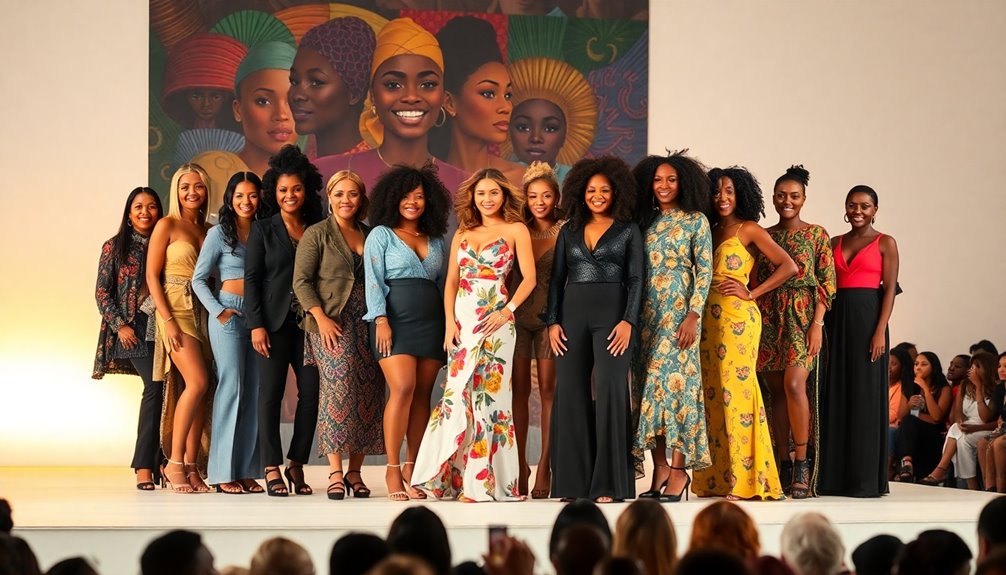
The CFDA's commitment to diversity is evident in its proactive approach to inclusivity within the fashion industry. You'll find initiatives aimed at amplifying underrepresented voices, guaranteeing that all talents receive recognition. By collaborating with various organizations, the CFDA promotes equitable practices and regularly assesses industry standards.
Here's a quick overview of some key diversity initiatives:
| Initiative | Purpose | Impact |
|---|---|---|
| CFDA/Vogue Fashion Fund | Support emerging designers | Financial and mentorship aid |
| Diversity Mentorship Program | Educate on best practices | Foster inclusive leadership |
| Collaborations | Partner with diverse organizations | Expand representation in fashion |
| Annual Assessments | Evaluate progress in diversity efforts | Maintain ongoing accountability |
You'll see that these efforts contribute considerably to a more inclusive fashion landscape.
Impact on American Fashion

Innovation in American fashion has flourished largely due to the CFDA's influence and initiatives. By supporting over 450 leading designers, the CFDA cultivates a vibrant community that drives creativity and originality.
Their flagship CFDA/Vogue Fashion Fund not only provides financial backing but also essential mentorship, helping emerging designers navigate the industry's complexities.
You'll notice the growing emphasis on sustainability and ethical practices, as the CFDA promotes responsible innovation.
Their annual Fashion Awards celebrate outstanding contributions, inspiring designers to push boundaries and explore new ideas.
With a focus on diversity and inclusion, the CFDA guarantees that various voices are heard, enriching the American fashion landscape.
Ultimately, the CFDA's impact is profound, shaping a future where creativity and responsibility coexist seamlessly.
Frequently Asked Questions
How Can Designers Apply for CFDA Membership?
To apply for CFDA membership, you need to be a leading designer in the fashion industry.
Membership is exclusive, so you can either be elected by current members or invited directly.
It's important to showcase your work and demonstrate a commitment to American fashion.
You might also consider participating in CFDA programs, as this could enhance your visibility and connections within the community, potentially paving the way for membership opportunities.
What Are the Benefits of CFDA Membership?
As the saying goes, "You can't make an omelet without breaking a few eggs."
CFDA membership offers you invaluable benefits.
You'll gain access to exclusive networking opportunities with industry leaders, financial support through initiatives like the CFDA/Vogue Fashion Fund, and mentorship programs tailored to nurture your talent.
Plus, it enhances your credibility in the fashion world, helping you stand out and attract potential collaborators and clients.
It's a game-changer for your career!
Are There Any CFDA Events Open to the Public?
Yes, there are CFDA events open to the public!
You can attend the annual CFDA Fashion Awards, which celebrates the industry's standout talents.
Additionally, CFDA often hosts panels, exhibitions, and other events that engage the community and promote fashion education.
Keep an eye on their website or social media for announcements about upcoming public events, workshops, or initiatives that you can participate in and enjoy firsthand!
How Does CFDA Support Sustainable Fashion Practices?
The CFDA champions sustainable fashion practices by promoting responsible design, encouraging eco-friendly materials, and supporting innovative production methods.
It offers mentorship programs that guide you in creating sustainable business models. You'll find resources that educate on environmental impacts, helping you make informed choices.
By fostering collaboration among designers, the CFDA sparks creativity in sustainability, ensuring that the future of fashion respects both artistry and the planet.
Together, you can make a difference.
Can Non-Designers Get Involved With CFDA Initiatives?
Yes, non-designers can get involved with CFDA initiatives!
You can participate through various programs, events, and volunteer opportunities. The CFDA often seeks individuals with skills in marketing, business, and sustainability to support their mission.
By attending events or engaging with their community, you can contribute to promoting diversity and inclusion in fashion.
Keep an eye on their website for announcements and ways to collaborate, as they value input from all industry enthusiasts.
Conclusion
In exploring the CFDA, you've uncovered the beating heart of American fashion, reminiscent of a modern-day atelier where creativity flourishes. Just as Eleanor Lambert envisioned, the CFDA weaves together innovation and tradition, nurturing talent like a skilled tailor crafting a bespoke suit. By championing diversity and sustainability, it not only shapes styles but also the industry's future. As you embrace this vibrant tapestry, you're witnessing a movement that echoes through the ages, redefining what fashion truly means.



